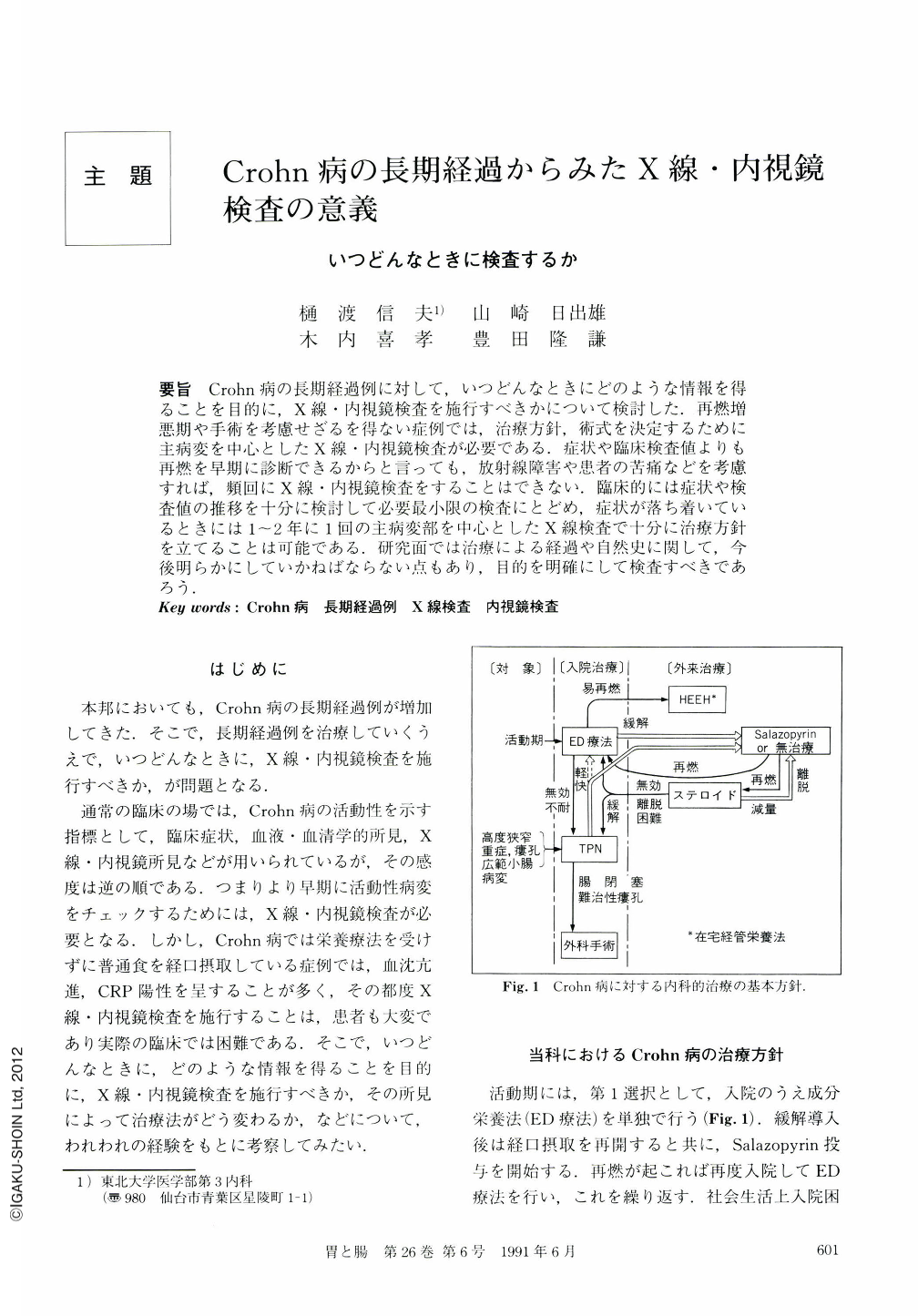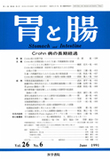Japanese
English
- 有料閲覧
- Abstract 文献概要
- 1ページ目 Look Inside
要旨 Crohn病の長期経過例に対して,いつどんなときにどのような情報を得ることを目的に,X線・内視鏡検査を施行すべきかについて検討した.再燃増悪期や手術を考慮せざるを得ない症例では,治療方針,術式を決定するために主病変を中心としたX線・内視鏡検査が必要である.症状や臨床検査値よりも再燃を早期に診断できるからと言っても,放射線障害や患者の苦痛などを考慮すれば,頻回にX線・内視鏡検査をすることはできない.臨床的には症状や検査値の推移を十分に検討して必要最小限の検査にとどめ,症状が落ち着いているときには1~2年に1回の主病変部を中心としたX線検査で十分に治療方針を立てることは可能である.研究面では治療による経過や自然史に関して,今後明らかにしていかねばならない点もあり,目的を明確にして検査すべきであろう.
We dlscussed the timing of radiographic and endoscopic examinations for patients with longstanding Crohn's disease. In order to decide on a therapeutic plan or an operative procedure, it is necessary to make examinations of major lesions involving and in cases whose complications call for an operation. The radiographic examination is superior to the endoscopic one, because the endoscopy is not able to be inserted beyond the stenosis or beyond a severe anal lesion. Detection of relapse in intestinal lesion is clear from morphological examinations earlier than from abnormalities of laboratory data or clinical symptoms. However, frequent examinations should not be carried out in cases without severe symptoms, because damage by radiation or pain brought on by examinations must be considered. Detailed evaluations of serial changes in symptoms and laboratory data will make it possible to minimize the number of morphological examinations. For patients in clinical remission, it is possible to make a therapeutic plan by relying on radiographic examination of major lesions once per 1-2 years. On the other hand, from the standpoint of clinical research, there are many problems to be cleared up by morphological examinations. For example, clinical course under treatment, natural history etc. The examinations should be performed with such definite aims in mind.

Copyright © 1991, Igaku-Shoin Ltd. All rights reserved.


